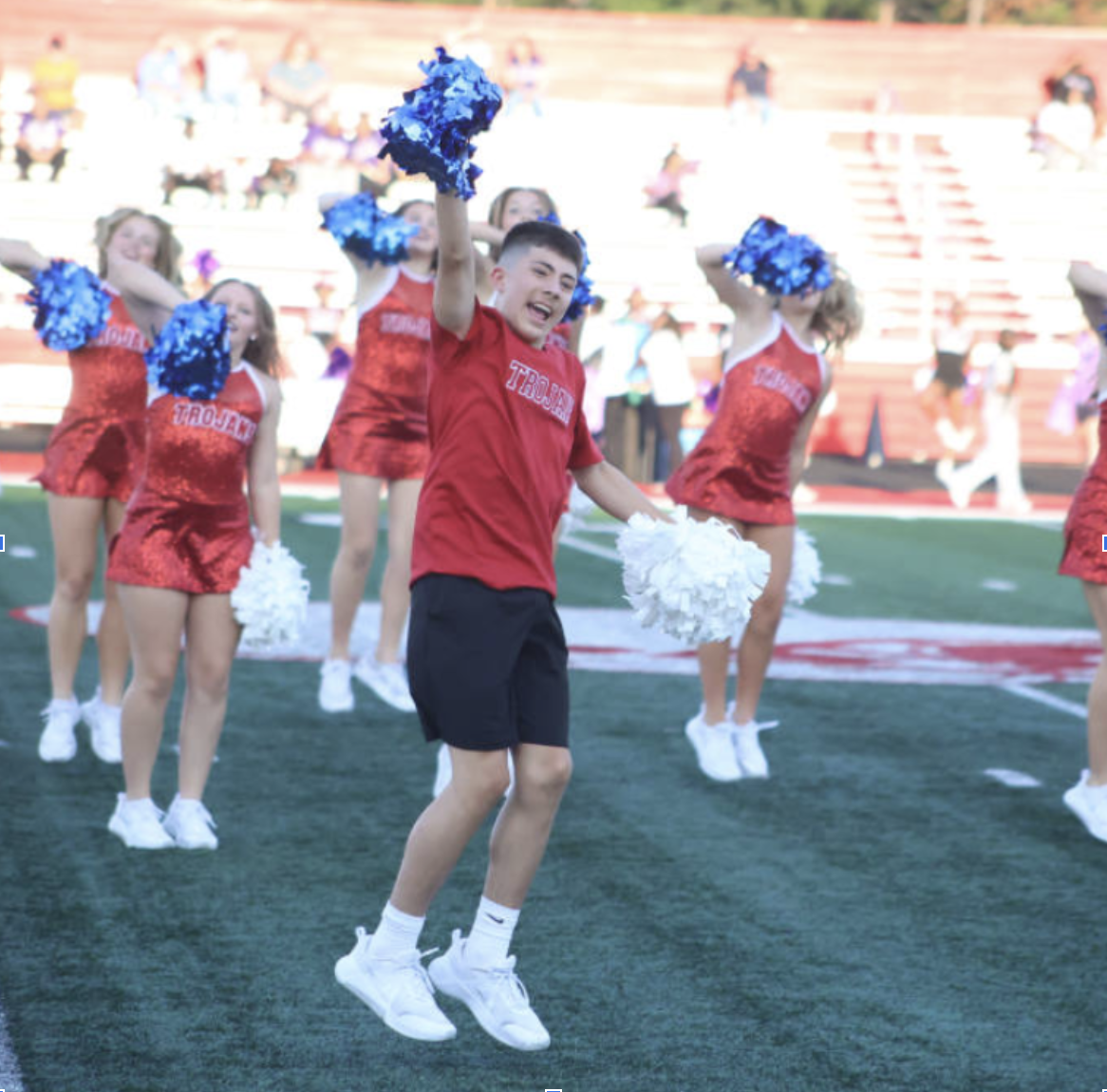Many students at CG participate in dance, whether that be ballet, hip-hop, tap, or a mixture of many different styles. However, sophomore Deekshitha Daruvuri practices a style of dance a little less popular in Greenwood, Indiana: Indian classical dance.
Indian classical dance is a very strict discipline of dance, and learning it in the US is a lot different than where Daruvuri originally learned it in India.
“Especially since we live in Indiana where it’s not that popular, it is quite different,” Daruvuri said. “I don’t really have an instructor who is going to correct me on a mistake I made. I’m learning by myself. No one is teaching me. I just don’t have as many resources as I had in India.”
Daruvuri was born in India but moved to Canada as a young child before moving back to India and then finally to the United States.
“When I went to Canada, I was a little ‘whitewashed,’” Daruvuri said. “I didn’t really retain my Indian roots that much, and my mom was a little scared that I wouldn’t remember my culture or anything.”
Even though Daruvuri’s mom never participated in Indian classical dance herself, it was important to her that her daughter have a way to maintain her Indian roots.
“She joined me in the dance not for me to learn it, but first to understand the history because that dance requires you to know some mythological stuff about Indian culture,” Daruvuri said. “You are basically narrating a story through your dance.”
Indian classical dance is not merely a performance, it is considered a sacred storytelling.
“There’s this god named ‘Lord Shiva’ and he’s the god of death, but he has another variation of him where he is the ‘Nataraja,’ or the king of dance,” Daruvuri said. “All the forms of Indian classical dance are variations of ‘Nataraja.’ We are dancing to him and other gods who are taking in our dance. We are narrating their story. There’s even this theory, a conspiracy theory, among classical dancers that if you do a certain dance and execute it perfectly, Lord Shiva himself is going to appear to you and grant you a wish, but you have to be very disciplined, very strict, very composed. Your dance should be so perfect that it is inhuman basically. I’m not sure if it’s true, but my teacher told it to me. A lot of people have tried it and failed. I have tried it myself; it’s very hard.”
The costumes the dancers wear also are reflective of the stories they tell.
“If you are narrating a different story, you have different colors,” Daruvuri said. “Kuchipudi is more like a saree, and Bharatanatyam is more like you wear a pant and wear some stuff on it. Nowadays Kuchipudi outfits are also getting pants but traditionally it’s supposed to be a saree.”
Kuchipudi and Bharatanatyam are both styles of Indian classical dance. Although they are similar, there are some differences.
“I, specifically, since I was a kid, did Kuchipudi,” Daruvuri said. “I’ve moved on from Kuchipudi to Bharatnatyam right now, so I’m transitioning. I’m doing self-learning although in this kind of dance, a teacher is really necessary.”
Daruvuri took Indian classical dance lessons in India, where she received disciplined instruction from a teacher and was also able to do performances. Despite the love she still has for the dance today, it is just not possible to take regular lessons with her busy schedule.
“I could go to Carmel and be a student and do performances there, but my time does not allow it because I am a very busy student,” Daruvuri said. “I have goals to meet and that is a big commitment for four hours because I have to drive to Carmel and back on a Friday. It ends at 9:30 p.m. and the drive is about an hour to Bargersville. I cannot dedicate my Fridays and need to work then. I could, but choose not to because I have to prioritize other things as well as keep my love for classical dancing.”
However, self-learning has proved to be a good alternative for Daruvuri.
“I use many YouTube videos to learn more advanced steps,” Daruvuri said. “Also, I am at a stage where I don’t need constant attention from my teacher. I am way past my learning stage, so I look up some trendy and latest tunes and music and try to make my own choreography.”
Even though Daruvuri no longer has a teacher, the dance lessons she took from her instructor still have an impact on her dancing today.
“As I progressed over the five years that I learned with my teacher, I really increased my patience,” Daravuri said. “She was really strict. It’s a good thing though, this dance really requires one to be disciplined, but little kid me hated that teacher because she used to scold me.”









